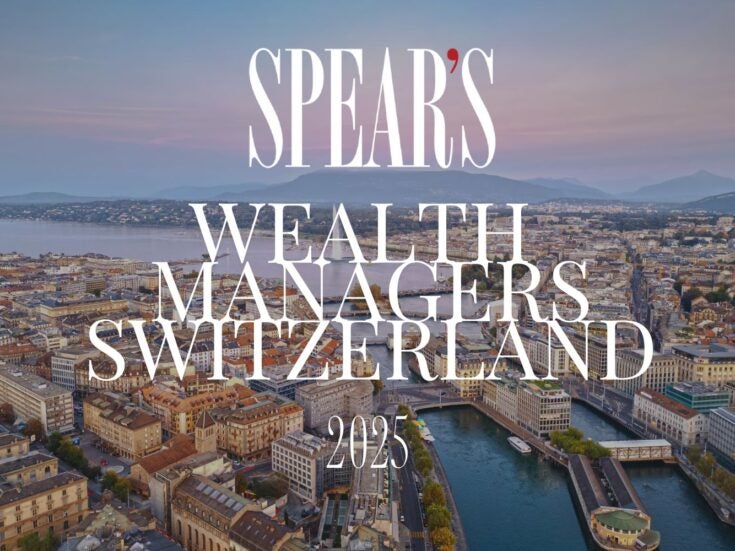
Do we really know what we want? Or do we want what we’re told we want by S&M fantasy-mongers, asks. Andrei Navrozov
For his birthday his wife gave him a riding crop that cost 100 francs,’ a writer called Arnold Ruge complained of his newly married friend, a fellow German émigré in Paris, ‘and the poor fool does not ride, nor has he a horse. Everything he sees he wants to have, a carriage, smart clothes, a flower garden, new furniture from the Exhibition, in fact the moon.’
On another occasion, this consummate fashion victim – an obscure journalist by the name of Karl Marx who had got himself hitched to the daughter of Baron Ludwig von Westphalen, a Prussian grandee descended on his mother’s side from the Earls of Argyll – was told by a female acquaintance that she simply could not imagine him being happy in an egalitarian society. ‘Neither can I,’ Marx replied. ‘But when the time comes, we will have been long gone.’
Was the author of The Communist Manifesto a hypocrite? No more, I dare say, than most of us in the West of yesterday and of today, swept up as we have been in the irresistible rhetoric inundating the world through the opened floodgates of capitalism. The Siberian parliamentarian, who buys his mistress a Kelly bag in every colour of the reptilian rainbow, and the Californian philanthropist, who buys for his son a museum of modern art, are brothers under the skin and Marx’s successors in material interest.
Yet the tale of Western consumerism is a good deal more piquant in the telling than its formalist scourges, academics excoriating it in the manner of Thorstein Veblen’s Theory of the Leisure Class, would have us believe. In fact, it all starts with the riding crop.
Thirty years ago my insertion, in The Yale Literary Magazine of which I was editor and publisher, of an advertisement for Hermès, then still predominately a manufacturer of equestrian equipment, caused a campus furore that contributed to the university’s decision to shut down America’s oldest literary journal. ‘Bring us your horse,’ ran the tag line, ‘we’ll do the rest.’
To this day I remember the suffragette-plain faces of undergraduates trotting to complain to college deans that the induction of so brutally class-conscious a sentiment into their egalitarian midst was an outrageous act of politically motivated malice. The Yale student body, blissfully innocent of commerce, had been raped by a gang of capitalist sadists from Paris. Advertisements in the same issue for Rolls-Royce motorcars and the jewellers Buccellati and Bvlgari had passed unnoticed, moreover. It was the riding crop that made them cringe.
The shift that began in the 1980s in the attitude to material consumption generally, and in particular to the culture of fashion that regulates and refines its modes, has been nothing short of a watershed. As an historical epoch, it can be compared to Britain’s locomotive-like passage through the Victorian age, that period of social and ethical transition during which, according to Steven Marcus in The Other Victorians, pornography established itself as a literary genre and photography, according to R.H. Wilenski in The Modern Movement in Art, became the arbiter of verisimilitude in the fine arts. Mechanical and repetitive like most Victorian pornography, photography was the ideal medium of communication between the burgeoning middle classes and the purveyors of their fantasies of self-aggrandisement, which typically centred on the artistic and the aristocratic.
Like Daguerre’s first experiments with light, erotic writings like de Sade’s Justine or von Sacher-Masoch’s Venus in Furs belonged to the pre-Victorian, pre-mechanistic age of pornography. ‘There was hardly any pornography in the contemporary sense prior to the 19th century,’ as the critic Henri Van Lier has shown, noting that neither the eroticism of a Rétif de la Bretonne nor the perversity of a Marquis de Sade was motivated by a social order from their readership, by the desire to please or the need to sell. By contrast, the later pornography – like modern advertising – is quintessentially interactive, more so, if anything, than the notoriously venal relationship between a Union of Soviet Writers hack and his Politburo clientele in totalitarian Russia.
Like a communist pasha of old, today’s consumer never knows whether his desires are catered to or invented for him, as his most secret fantasies seem to turn to graphic reality before he has had the chance to have them. His innermost daydreams are literally modelled for him, by the models, the stylists, the property masters, the makeup artists, the hairdressers, and the entire complex of aspirant Pygmalionism of which modern commerce for the most part consists. His instantaneous frustration at seeing it materialise in two dimensions, rather than the desired three, is the motor of industrial progress. ‘Photography,’ remarks Van Lier, has ‘played a decisive role in this development.’
The world wide web, in part responsible for the watershed of the 1980s, has played a similarly pivotal role. Pornography has become interactive in earnest and advertising has followed its lead, anticipating the credit card holder’s most shameless whims. For the first time in history, exclusivity has been mass-marketed on a global scale.
Glossy fashion magazines have become the aristocrats of the genre, its exquisite arbiters and controversial trendsetters. Aristocratic longing – and the whole organon of European culture that was its incubatory crucible – has been redefined as that which the internet cannot provide. Hence it is unlikely that even the scruffiest undergraduate of today would be upset upon seeing an advertisement for a Hermès crop in the pages of a literary review.
Music videos and fashion layouts, Cavalli corsetry and Versace heels, hunting tweeds for her from Chanel and for him from Ralph Lauren, hoardings promoting Agent Provocateur’s Maitresse and the dark circles suggestive of amatory abuse under Kate Moss’s eyes, have all told him that aristocratic solipsism and fetishism are cool, that the nobility and its putative perversions are at the cutting edge of modern culture.
Selecting a book from an imaginary library of the future in the early 1900s, Anatole France claimed in a preface to Flügel’s The Psychology of Clothes that ‘one need only take a fashion magazine to see how women dressed a century after my passing, and these flounces would teach me more about the future of humanity than all the philosophers, novelists, preachers and professors ever could.’ That century is upon us.
Taking a leaf out of France’s book, one notes that the dominant trend in fashion and fashion advertising in the early 2000s is the overt fetishism, to quote a random chapter heading in France’s contemporary Havelock Ellis’s Sexual Selection in Man, of ‘Mutilations, Adornments, and Garments, Sexual Allurement being the Original Object of such Devices’.
In 1980, when David Kunzle published his magisterial and absorbing study Fashion and Fetishism: A Social History of the Corset, Tight-Lacing and Other Forms of Body-Sculpture in the West, fetishist and sadomasochist discourse still belonged to the domain of the arcane, with specialised journals such as Skin Two and Marquis proudly reproducing every instance of acceptance of one or another of its aesthetic or ethical premises in the mainstream media.
By 1992, when Michelle Pfeiffer in Batman Returns provided global exposure for the curious garment once presaged on the margins of public consciousness by Emma Peel’s catsuit in The Avengers, they had just about given up counting. By 2008, leafing through a magazine like Vogue is a little like tearing through a chapter of My Secret Life, the anonymous, eleven-volume, 4,200-page classic of Victorian erotica.
‘The agitating and agitated Polaire, with the waist slender to the point of pain, in a spasmically tight bodice, the prettiest slimness! And, under the aureole of an extravagant masher’s hat, orange and plumed with iris leaves, the great voracious mouth – she put rouge on the gums and tongue – the immense black eyes, ringed, bruised, discoloured, the incandescence of her pupils, the bewildered nocturnal hair, the phosphorous, the sulphur, the red pepper of that ghoulish, Salome-like face, the agitating and agitated Polaire!’
This is not a stylist’s idea for an Elle photo shoot with Dita vot Teese, but the description of a public appearance over a century ago by Emilie-Marie Bouchaud, in art Polaire, from a volume entitled Petite Histoire des Cafés Concerts. ‘Where would we be without the attribute of the sex bomb, ordinary as life itself yet erotic as a Helmut Newton photograph? It looks easy enough to make, but our experience shows that the “pencil technique” is in the gift of a precious few.’
This is a plug for the designer Alessandro Dell’Acqua, alleged to have ‘perfected the pencil skirt’, in a recent issue of the Russian Harper’s Bazaar. Were it not for the reference to Helmut Newton and the retro neologism ‘sex bomb’, it might pass for a ‘Perseverance Writes’ entry on the subject of ‘Corset and I are One’ in the Englishwoman’s Domestic Magazine of the 1860s: ‘I have mine made by one of our best artists, of silk or satin, stoutly lined, and when sent home they measure exactly fifteen inches round.’
‘If I had to boil down my thinking about clothes into one word,’ opined a Philadelphia lady possessed of a much-publicised waistline, ‘that word would be Discipline.’ This sentiment is, quite literally, the foundation of the fashion trade, which furnishes the modern woman with such fetishist attributes as require, and invariably exact, her obsessive devotion verging on abject servitude.
The riding crop, which Nietzsche famously counselled men not to forget when ‘going to women’, is more than the coveted symbol of aristocratic provenance it was for Marx; it is a vital nerve at the very centre of a hugely articulated system of sadomasochist relationships between the producers and the consumers. Whether embodied in a corset or in a pencil skirt, the discipline of dressing, grooming, or merely walking, required of the modern woman is greater, if anything, than what was asked of the strait-laced, aristocratic and presumably depraved Victorian original whose feminine attributes are so much in vogue today.
What of the women’s movement, whose lobbying at university contributed to my political downfall all those years ago? One of the women was none other than the feminist authoress Naomi Wolf, recently in the news for having sold a rather out-of-date kiss-and-tell story about having been sexually harassed at Yale by Professor Harold Bloom, a noted populariser of Shakespeare.
Submission, you see, is empowering. Feminism’s paradoxical view of power, which as far as I can discern is the only product of nearly half-a-century of frenetic intellectual and political struggle for manumission, in America as elsewhere, has been of enormous help in shaping the rhetoric of modern fashion. As the cult of internal contradiction in the editorial content of glossy magazines may be traced to the oxymoron of Freudian analysis, so their larger culture owes almost everything to this Hegelian sleight of hand. Women are now free to submit, and the fashion photographer’s lens is here to reflect this with all the highbrow salaciousness of a Victorian pornographer’s. Were they not free to submit in his day? Was not Discipline with a capital D their lovingly chosen word for fashion? Was not Baroness von Westphalen every inch the mistress in her own home?
Like Dress Reform at the close of the 19th century, feminism has merely added new brands to the culture of material consumption. All is well in our Plutopia, where sadomasochism is the dominant rhetoric. Karl Marx would have been pleased.







